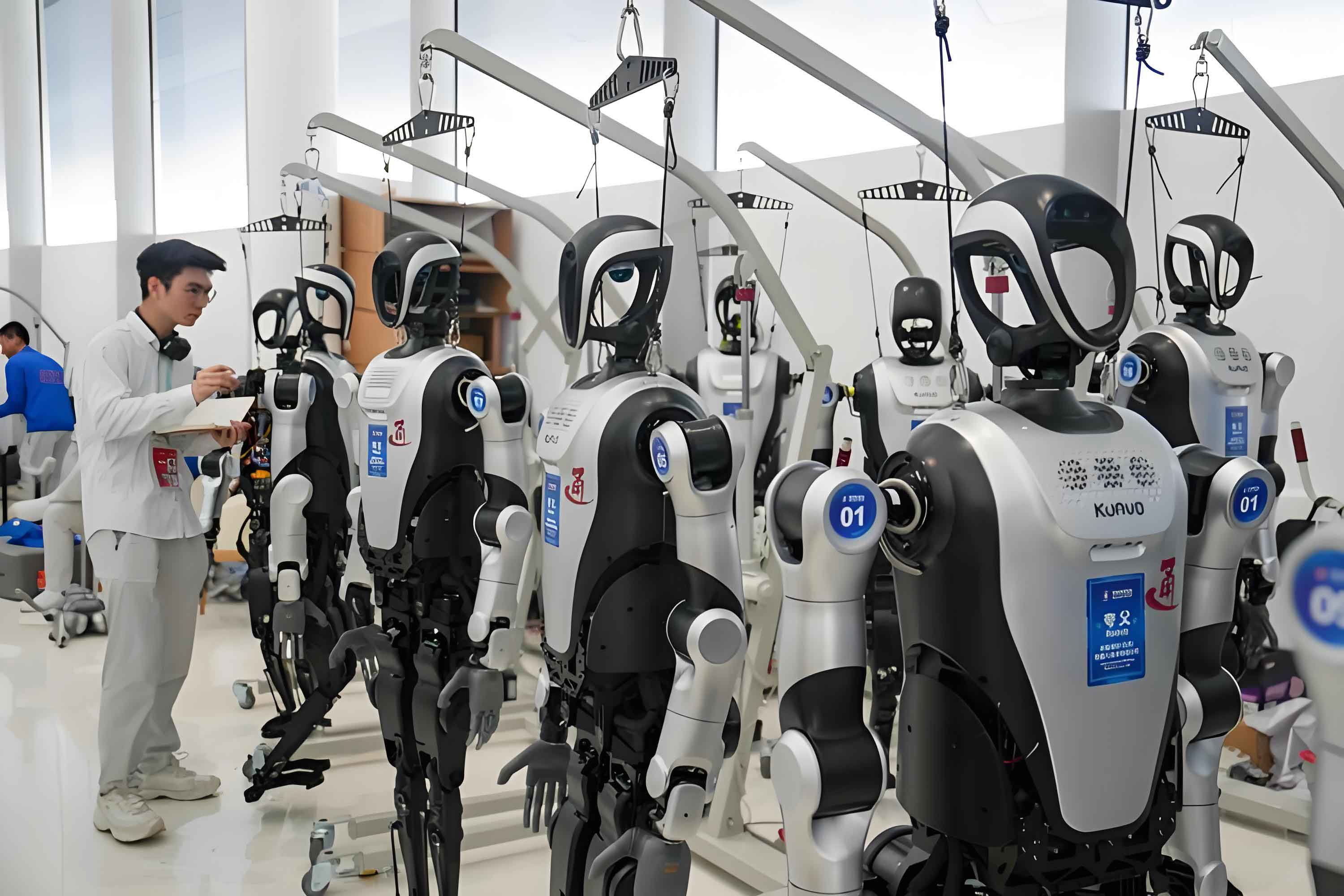
On the shores of Taihu Lake’s Suzhou Bay, a 1.74-meter-tall figure sprints at 2 meters per second—not an athlete, but a humanoid robot undergoing rigorous training for April’s groundbreaking global event. The Beijing Economic-Technological Development Area (BDA) will host the world’s first humanoid robot half marathon on April 13, where these machines will race alongside human runners on a 21-kilometer course. This unprecedented challenge shifts focus to critical durability aspects often overlooked in industrial or domestic applications.
At Magic Atom’s Suzhou headquarters, the humanoid robot “Xiaomai” demonstrates the painstaking preparation required. During recent load-bearing tests, four iron plates strapped to its frame forced engineers to repeatedly stabilize it when uneven surfaces disrupted its gait. “Mastering walking precedes running,” explains Chen Chunyu, VP of R&D at Magic Atom. “We’re migrating algorithms to new hardware prototypes—a 2-3 month process requiring meticulous calibration between software commands and motor responses.” Any mismatch between intended movements and actuator performance risks catastrophic falls during dynamic maneuvers like cornering.
The marathon represents a brutal stress test for humanoid robots, exposing three primary vulnerabilities:
- Joint Strain: Running demands exponentially higher torque from knees and ankles as weight increases. CASBOT 01 and Xiaomai—both adult-sized at 1.7+ meters and 60kg—endure greater stress than lighter 1.3-meter counterparts like Unitree models weighing 35kg.
- Thermal Management: Sustained high-power motor output risks overheating without advanced cooling systems, potentially causing permanent damage during the estimated 3+ hour race.
- Mechanical Fatigue: Continuous high-load operation accelerates wear on internal components, forcing manufacturers like Lingbao to redesign lighter structures for improved durability.
Competition rules permit battery swaps or robot replacements (with 10-minute penalties per substitution), though teams prioritize different strategies. Magic Atom plans two battery changes for Xiaomai, noting that walking endurance drops from 4 hours to 3+ hours when running at 2m/s. Lingbao’s Yang Guodong emphasizes single-robot participation: “Running in videos is easy. True validation comes from completing complex, long-duration tasks without hardware failures.”
Behind the spectacle lies a technological revolution. “A year ago, few humanoid robots could attempt this,” Chen reveals. China’s rapid adoption of reinforcement learning—where algorithms self-optimize through simulated trial-and-error—has democratized motion control. Unlike traditional methods requiring precise kinematic modeling, this approach allows quicker adaptation to real-world variables through “Sim-to-Real” migration.
While marathon running remains peripheral to core humanoid robot applications, Zhou Di of the Ministry of Science and Technology acknowledges its benchmarking value: “End-effector dexterity, cognitive intelligence, and stable mobility rank higher for industrial/home use. But this event provides tangible reliability comparisons for investors and commercial buyers.” Some manufacturers, citing resource constraints, have declined participation, underscoring the significant engineering commitment required.
The ultimate victory won’t be measured in finish times. As humanoid robots converge on this shared starting line, their capacity to transition from controlled labs to unpredictable real-world environments marks the true race—one where stability triumphs over speed, and resilience unlocks broader adoption across healthcare, logistics, and domestic services.